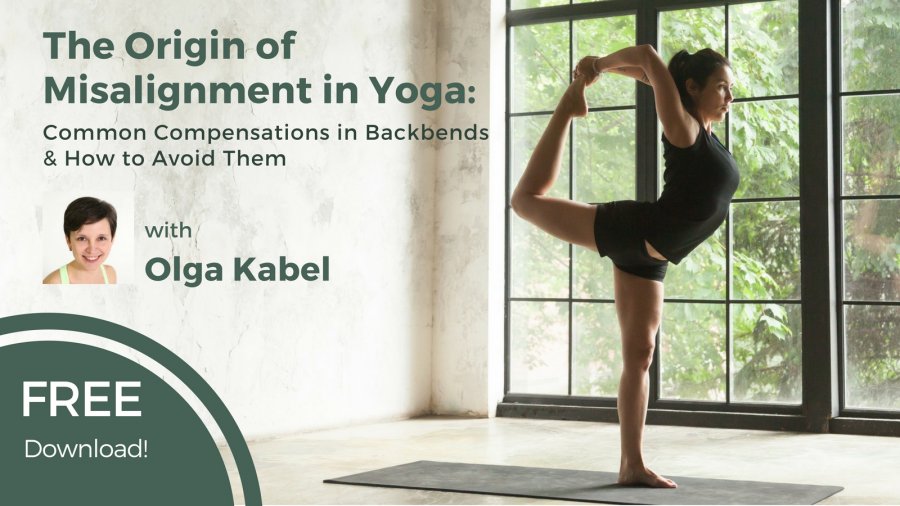Free Download! The Origin of Misalignment in Yoga: Common Compensations in Backbends and How to Avoid Them
Course Info
- Price:
- $0.00
Olga Kabel
 Educated as a school teacher, Olga Kabel has been teaching yoga for over 15 years. She completed multiple Yoga Teacher Training Programs, but discovered the strongest connection to the Krishnamacharya/ T.K.V. Desikachar lineage. She had studied with Gary Kraftsow and American Viniyoga Institute (...
Educated as a school teacher, Olga Kabel has been teaching yoga for over 15 years. She completed multiple Yoga Teacher Training Programs, but discovered the strongest connection to the Krishnamacharya/ T.K.V. Desikachar lineage. She had studied with Gary Kraftsow and American Viniyoga Institute (... 
Perfect alignment in yoga poses used to be the Holy Grail of yoga practice. Today, however, the concept of alignment has come under fire in the yoga community for attempting to fit people into “one size fits all” expressions of the pose.
There’s more to the concept of alignment than that, however, says yoga therapist Olga Kabel, founder of Sequence Wiz.
We all come to yoga with a baggage of past experiences and habits, which influence how we sit, how we stand, how we walk, and so on. So, when we being yoga, our body will assume it’s usual movement patterns. This will cause us to avoid working in certain areas that are weak, and instead transfer the demands of the pose into another area of the body.
This is what is often referred to as release valves, or movement compensations, and it is the origin of most common misalignments in yoga poses.
For example, a common release valve, Olga explains, is dumping into the low back during backbends. The spine has more mobility in the low back than other parts of the spine, so instead of distributing the backbend in the entire spine, we will tend to concentrate the movement in the low back. This may help to get us deeper into the pose, but it unfortunately can lead to numerous back issues over time. This is the main reason that it’s essential to learn proper alignment in poses.
For each directional movement of the spine, Olga explains, there is a list of pretty typical release valves. It’s important for yoga teachers and students to learn these, so you will know what can potentially happen with your neck or lower back, so you can check yourself or your students to make sure that you’re not falling into those habitual movement patterns.
As we begin to understand the origin of particular misalignments, Olga explains, we can also develop tools to help students to self-correct and avoid the issue. We can teach students how to e.g. distribute the curve all along the back in a backbend: from the neck, through the upper back, into the lower back so we create equal contraction and engagement in all the posterior back muscles. This will increase blood flow into the area and release tension, enabling us to enjoy all the benefits of backbend while avoiding the drawbacks.
Olga further discusses the benefits of backbends for releasing low back tension and enhancing the health of the spine. We don’t have to be able to do dramatic poses like Wheel Pose or Dancer’s Pose to benefit from backbends, Olga explains. There are other poses that are much less dramatic but which greatly help increase circulation in your lower back/upper back areas, reduce chronic tension, and create more mobility and stability.
Olga further discusses the origin of SI joint issues and best poses for creating stability and strength in the whole lumbosacral area, and strengthening all the muscles that support it.
Also check out Olga's course on YogaUOnline: Avoiding Yoga Injuries: Common Alignment Mistakes in Backbends and Lateral Bends.